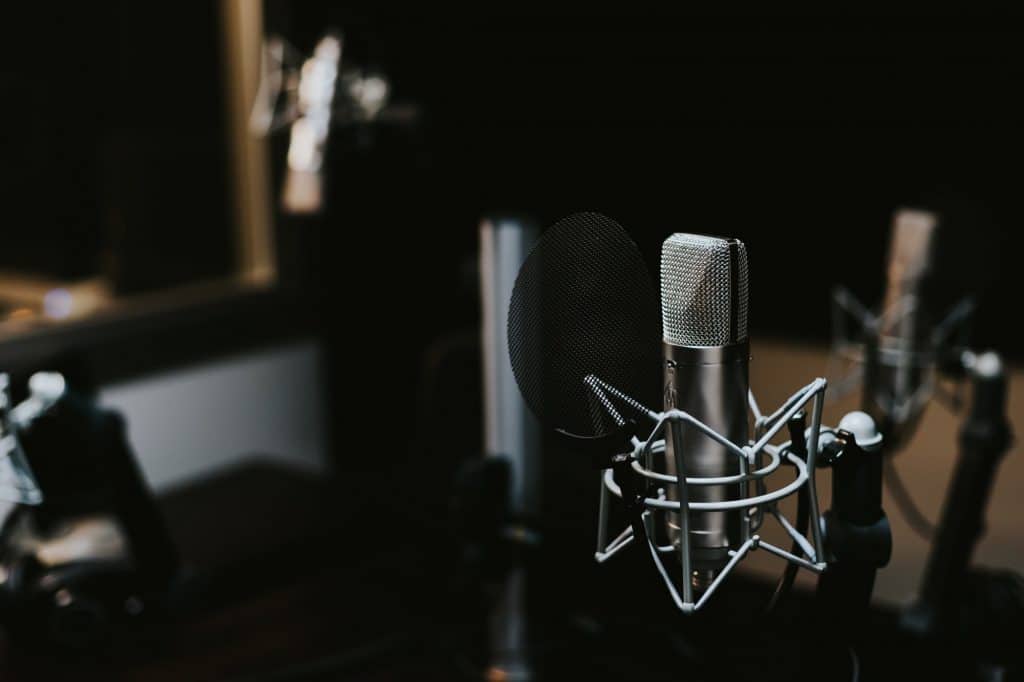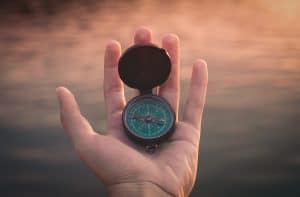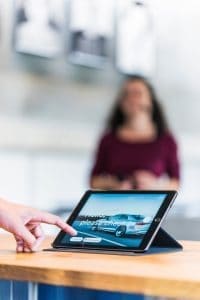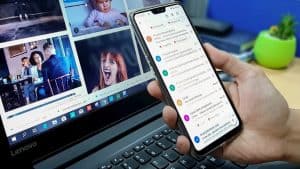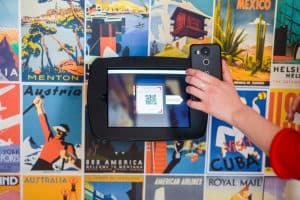The Boost Hospitality Podcast is back for another season! And we are now in Season 7. And this time, we are currently on the third episode of season seven! Today we are talking about the future of hospitality and if self-check-in going to be essential or not. Joining me on this episode, we have David Jacoby of Hostfully.
What we are going to be discussing in detail is a little bit more about what self-check-in is, and how we as hospitality businesses can potentially get started for what could becoming.
David Jacoby of Hostfully talks about Self Check-in and the Future of Hospitality
Hostfully is a platform for hosts for property managers to help them run their business from tip to tail. Essentially, we have two separate platforms. One is a full-service property management software that helps you list your properties on multiple channels like Airbnb and your own website. It automates emails to guests and have a central reservation system, calendar – so you don't get double bookings, owner portals – so you can tell the owners about how often the place is being booked and how much they're making, if you're renting it out on behalf of owners, stuff like that.
Our other platform is a guest communications platform or a digital guidebook. We take that mediocre-looking, three-ring binder, bring it into the 21st century and make it really easy to share important information with the guests. I think we were mentioned a few times on your Facebook group. That's how we first connected by some users that we have. It was really exciting to see that and how that started. It was really out of my own personal experience as both a guest and then as a host.
How Hostfully started
About nine years ago, my wife and I took a one-year sabbatical. We travelled around the world. We had our one-year of fun before we had kids. Not that this isn't fun, just a different kind of fun.
We went to 27 countries and five continents and ended up staying in 38 homes during that trip. Some were through traditional vacation rentals, some through friends of friends. Also, do you know the website couchsurfing.org? We did a lot of Couchsurfing. This was back in 2010 when it was a bit more popular then than it is now. For those who don't know, it's kind of the Airbnb without the financial transaction. It's literally hosts who want to meet people from other cultures and help travellers travel and they'll host you for free. Through Couchsurfing specifically, we stayed for free with people in Lima, Peru in Cairo, Jerusalem, in Kigali, Rwanda in Hanoi, Vietnam, some really random places.
Realization
That's when I first realized the incredible influence that the host has on the guests day. Anything a host told us to do went to the top of the priority list above Lonely Planet or TripAdvisor, Yelp or any of those websites. We got the inside scoop we got the hidden gems.
After that trip, we moved here to San Francisco into a single-family home. It has this beautiful basement space where my parents come out from Connecticut and spend three months a year with the grandkids. They don't care about me anymore, just the grandkids, that's how it works these days.
Started with traditional Airbnb set-up
For the other nine months, we started putting that up on Airbnb. That was such a good experience that the main two floors of the house are where we live. We have an extra guest room and we open that up on Airbnb as well. That's the traditional Airbnb model of sharing your kitchen and sharing your living space.
Sometimes I'll have two reservations at the same time in our house. One in our guest room and one in our more private basement in LA unit. We've had well over 300 guests now in our home and I've been an Airbnb super host for over four years. I realized firsthand the pain point of being in constant communication with guests after guests and answering all the questions that they have before their trip and their separate set of questions while they're staying with me while also realizing the pleasure of hearing from them that they went to my favourite coffee shop, to my favourite brunch spot, to Fisherman's Wharf and Alcatraz and did all the touristy things.
Unique experience
But it was staying in my neighbourhood that gave them the unique experience and dominates the five-star reviews at them. Looking into the industry, I realized there's a big focus on getting the reservation. After that reservation is made, there weren't a lot of tools to help the host be a better host.
The move to the digital guidebook
Speaking with more hosts, I realized that everyone had some form of a three-ring binder, mediocre-looking guidebook. I did that myself one night where I spent hours on Microsoft Word, making this real document and trying to have it be all cool-looking. I was banging my head against the wall thinking there's got to be a better way to do this.
That's the high-level overview genesis of my background and how I got into this space and after banging my head against the wall thinking there's got to be a better way to do it. I started Hostfully that gives hosts the ability to make a beautiful looking digital guidebook. There's also a print version so you can print it out and have it look really nice and similar to that mediocre one in the listing. But there's also a lot of benefits of being able to send it to the guests in advance and a lot of that is around self-check-in. It's time that we're talking about this.
PMS Integration
We started integrating just to finish the story on Hostfully. We started integrating with some property management software. One was a startup here in San Francisco originally called RV rental. Long story short on that, one thing led to another. It's kind of like dating. We had a loose integration at first and then a deeper integration. Our skill sets are complimentary. Our products are complementary, and we meet up and talk, have coffee and have lunch. We're like, “Hey, why don't we take things more seriously?” “What do you mean by that?”. We went from being two very, very small, scrappy startups to being one very small, scrappy startup and we merged and grown a lot since then, which is exciting.
So again, you can have our two products, there are their separate platforms, and we're doing a lot more integration between the two. So the sum of the whole is greater than the sum of the parts.
What does self-check-in mean? How does it work?
Having it means the guests can check in on their own without anyone there to greet them. Whenever they arrive, their flights are delayed, as an Airbnb host, you don't need to be waiting and wondering when they're going to come. Essentially there are either two buckets. One has an old school lockbox that has a key so you enter in a little code, open it up to get the key. You can check-in or having varying degrees of newer, smarter locks that either has PIN codes on it or are connected to your phone and with an app that automatically unlocks it. So there are different ways but essentially. you don't need to be there for them to check-in.
Please elaborate some potential pitfalls when it comes to having a self-check-in system.
There are a few pitfalls and solutions to the pitfalls of self-check-in. I'd say the big buckets would be the technology failing the guest experience standpoint and some safety measures when you don't have a person there greeting them.
So taking each of those one at a time, the technology failing. That's obvious. I heard about one smart log, there was some system update that just automatically happens. They got bricked and they just literally didn't work out. Unless you had to physically go into a factory reset of those smart locks. Imagine if it's a vacation home and you're not near there and the guest goes in and they can't. It's broken. They can't get in having an old school key. You need to make sure you have some kind of backup, especially if it's not your home and you're not there.
Some of the smart locks you just put right on top of the lock itself, so a key will still work. But then in other cases, whether it's a backdoor or you're hiding a key somewhere else or some other entrance in case that you've completely replace the lock and the technology fails, you really need to have a backup.
Pitfalls on the guest experience
The other from the guests experience standpoint. Self-check-in is maybe a little less personal that you're not greeting someone right away. But on the flip side, that's not necessarily the time a guest wants to talk with the host because they just arrived and they're tired. Maybe they're not in the best of moods as well. In general related to self-check-in, but just things to think about when wanting to make it personal, there are ways to do it without you being there. You can have automated emails and texts that get sent to the guests before they arrive and after they've arrived. The next day, send them a text whether you're personally doing it or through your property management software. Just check-in making sure everything's okay.
Personal touch
Also, our guidebook makes you look more professional and at the same time gives you a personal experience in general to the guests. You can also share check-in details very clearly. The host can have photos or even a video of where you should walk and where the basement door is or you can have a welcome video in general. You can have one video about check-in and another video that's just a general welcome video. “Hey, so glad you're staying at my place. Let me know if you have any questions.”
Technology pitfalls
Other things on the technology side that you can do, you can have smart home technology in terms of like Alexa and Google Home, too. When they walk in, having a message from the Alexa say, “Hey, it's so glad that you're staying here. Let us know if you have any questions.” That's been getting popular. Virtual concierge service are leading the industry in that area. We've done an integration with them so all the information you enter in now goes over to Alexa. At some point, later on, check-in with them. For self-check-in, they've done it on their own. Then if you want to give them a call the next day or later that day and see how things are going, that will add a personal touch if you have the time for that.
The final thing we will talk about self check-in is safety. If you're personally checking in, you can get that feel of, “Oh wait maybe this is going to be a troubled guest or not. And you can make sure that it is the guests who you think you think it is and not someone else altogether. Again, technology can help with that. You can have a video camera, not just a Smart Lock but there are some systems that have the video side as well. The host can see when they're checking in and you can get an alert that someone's opened the door. You can see a video of who it is and make sure it's what the reservation says.
Technology apps
There's also other technology like noise aware and party squasher which can tell if parties are going on. Noisy aware tells the decibel level. Party squasher can tell how many mobile devices are trying to get a Wi-Fi connection.
Before the guest stays, you can have pre-arrival forms that they fill out to get some more information about the guests or do background checks.
Some clients of ours have a whole separate agreement independent of the guests agreeing to the house rules on Airbnb, but there's a whole separate agreement that they need to sign.
How do you feel that guesthouse owners can adopt the self-check-in from your processes specifically with all the technology that is now available?
It depends on the specific house. There are many ways of doing self check-in. The hardest might be if it's an apartment in a big downtown building where there's a need to have that key. You can't use a smart lock. But there's still been technology that's helped that out. For example, Key Cafe is a business where you can go to a local cafe and get the key there to go in. I'd say it depends on your comfort level as to exactly how much you want to install.
I hear what you're saying about having the issues with someone not putting a key back or being cold and the buttons not working. I think having that redundancy is the best just knowing you have a backup. For example, we use August lock and that just goes right over the lock, so you can still use a regular key for that. It's got a keypad and we have a lockbox with a backup key. If the keypad doesn't work, they can use the lockbox. If someone used the lockbox and didn't put the key back, we can tell our guests to use the keypad. Having that redundancy I think is key.
How are you using email triggers with Hostfully and PMS to make sure that when the guests book up to the point of arrival, everything goes smoothly and you get people into the guidebook?
There are a few triggers that I personally have in place that we recommend to our users and I've seen from other clients of ours are doing. When the reservation is confirmed, send an email whether it's coming from Airbnb. It adds this consistency to it. You can confirm, “Hey, so glad that you're interested in staying in my place. I'm just wanting to reach out and confirm that that reservation is made.” Even though they might have gotten that confirmation from Airbnb, that email from the host is essential.
In that initial email, you can say, “Here's everything you need to be in touch as it gets closer to your arrival. But in the meantime, here's everything you need to know about your trip.” You have a link to the guidebook right there. You're making this awesome first impression, “Wow, this host knows what he's doing.” It's got all the local recommendations with all your favourite stuff. Now they can look around and see if there's a restaurant they want to make a reservation for or buy tickets to some activity in advance.
They can also see that there are some self-check-in details. You might not have your lockbox code in this right away in case they cancel. It's more of general directions and stuff like that.
Recommendations-only version
We have some clients that only send recommendations right away. We have a recommendations-only version of the guidebook. Five days before the guest arrives is when they send the full guide that has the check-in details and the house manual. So number one is that email right away when the reservation is confirmed.
Anywhere from 5 to 10 days, send a welcome email to the guests. The goal of that welcome email is you want to keep that as short as possible. I've seen these crazy long welcome emails that have all the information in the world about how to turn the TV, what to do at checkout, and if you want to use the laundry. Maybe 10% of the guests are going to and by making that email so long, you're just throwing up everything. No one reads any of the essential information. You want that email to be short that says. “here is a link to my guidebook.” That's got all the details in a very digestible manner. And then maybe if you want to say, “My lockbox code is 123., and any other highlights, you just keep that in the email itself.
Keep that email short. And then one day before the guest arrives, send one final email just saying, “Hey, just a reminder here for you to come tomorrow. Here's all the information that you need.”
How does the guidebook work? When do the guests get ahold of it? How does the host put the information in?
It’s a simple URL. It's not an app that you're forcing the guests to download and install, a temporary app for the three days that they're on vacation, but rather, it's a URL. It looks beautiful on any device. We see a lot of guests viewing the guidebook on a desktop because they're getting that welcome email before their trip. They're at work on their computer, they get that email, and they want to click on the link. It comes up and it looks great on a computer.
Our design was mobile first. It looks and feels like an app. It's super mobile-friendly, but again, you're not downloading anything. So that's how you share it and it works for platforms. Like Airbnb, they will block a URL before the reservation is made because they're afraid you're trying to take them offline to complete the booking. But after the reservation is made, you can send URL so you can have your email templates in Airbnb or through your property management software. It will include the URL. You just add it to your email templates and then the guest gets it.
How to do the guidebook
That's on the guest side. On the making side, it is online as well. It's software as a service platform. You go online, you create an account, and we make it super easy to make the guidebook. You enter in your address, check-in information, the Wi-Fi code, certain directions, and then any house manual information, so house rules or how to turn the TV on or how to use the laundry, and then any recommendations that you want. It's integrated with Google Places. You just start typing in the name of a place and all the details appear. You're not copying and pasting the address of each restaurant, finding a picture and finding the website. We make it real easy to make beautiful recommendations.
Creating your guidebook
You can have a pretty cool looking guide both up and running in say 20 minutes or so. Or you can get really into it and start making all sorts of videos on how to use your laundry machine, how to turn the TV on and all sorts of stuff. It'll take you know, anywhere from one to two hours.
As you scale in your multiple listings, it's really easy to make each additional guidebook because everything is really modular. You can make one recommendation card and add it to 50 guidebooks in one second or you can take your house rules and add it to all of your guidebooks. The host might need to change the Wi-Fi code, you might need to change directions, but for everything else, once you have one guidebook, you just copy it over and make a couple of tweaks and you have a new guidebook in minutes.
Guests can print the self-check-in guidebook. How does that work?
We have a print section and you can actually customize that too. You can change the colours, too, if you have certain branding, you can choose which sections you want to print. For example, the Getting Here section, a lot of people will remove that because they've already got in there if this is for the listing itself. There is some customization and in the print version as well. Then you can print it out.
We also have a QR code. I'm amazed that our technology has come a long way. You used to need an actual separate app to bring it up. Now you just bring up your camera and you put it over a QR code. So we have the QR code and you can print that out and put it on your refrigerator or coffee table and then people just put their phone over it, and the guidebook will pop up.
And also, one thing that you said about the guests asking about local recommendations, having the guidebook really enhances the quality of your conversation. It also decreases the number of questions you get, and I'll talk more about that in a second. You're also trying to provide that personal experience and I'm sure all your guests have had that deer in headlights. These are moments where a guest asks you a question like, “Hey, where should I go eat?”. You start giving them directions and they get all scared because they're not from the area. You're just telling them to go down the street and make a left, but they really freak out.
The guidebook has it all
Now you can say, “Don't worry, all the details are in the guidebook. Three days from now, when you want to go to this steakhouse, you can look at all the details in the guidebook. Let me just tell you about why I like it.” They'll really listen to you and not get concerned on the details of when it's open or how to get there.
We find that it doesn't only enhance quality. As I said, it'll decrease the number of questions you get but you're still going to get some questions. The guests are still going to ask you what's parking like or, where should I go eat? You can respond to that first question with a link to this specific section in the guidebook. Because this is a responsive design web application, each section has its own URL. You just take that URL and you respond saying, “Here's everything you need to know about parking.”. They're not going to ask you a second question, because they realize, “Oh, okay, all the details really are in this guidebook.”
Anything else you'd like to add?
I just want to comment that we actually have one guide book that is free. So go and kick the tires. You can make a pretty cool-looking guidebook for free. We also have a premium version and a lot of the features in the premium version has come from hosts that have asked for stuff. You can private label it, add your logo to it, you can add a splash page that collects the email address of not just the main point of contact, but other guests who is going to be there. The host can customize the URL and we've just launched a marketplace as well. You can upsell mid-state cleaning or extend the checkout or stuff like that. That's all part of our premium version, which is pretty low. It's less than $100 a year at the first level,
But we also have a beautiful guidebook. If you are a host that has just one property and you only need one guidebook, you can go for free. So go ahead and kick the tires.
Know more about David and Hostfully
Twitter: @davidjacoby, @hostfully_
If the guidebook is something that you think will benefit you, head over to www.hostfully.com and go to the guidebook. If you use the coupon code BOOSTLY2M, you'll get two months free of this guidebook, which is pretty cool.
In addition, Hostfully is now the new sponsors of Boostly Hospitality Podcast. ?
Listen to the full podcast on iTunes or Anchor or visit Boostly Hospitality Podcast for the full list of episodes!

